ISO 14001 certification in Al Madina
Get Free Consultation
ISO 14001:2015 is a globally recognized standard that is especially beneficial for businesses in Madina Industrial City. It provides a clear framework to help organizations reduce their environmental impact and operate in a more sustainable way. By implementing an Environmental Management System (EMS), businesses can not only comply with local and international environmental regulations but also enhance their overall efficiency and reduce costs.
To achieve ISO 14001 Certification In Madina, businesses first need to develop an environmental policy that aligns with their goals. They then identify the environmental factors that have the most significant impact on their operations and set realistic targets for improvement. A well-structured plan is created to manage, monitor, and track progress in reducing environmental risks, waste, and energy consumption. Regular reviews and updates to the system ensure that it continues to improve, making the business more sustainable in the long run. This certification not only helps businesses protect the environment but also boosts their reputation and builds trust with customers, partners, and stakeholders.
What IS ISO 14001?
ISO 14001 is an international standard for environmental management systems (EMS). It helps organizations manage their environmental responsibilities in a systematic way that contributes to sustainability.
In simple terms, ISO 14001 is about helping companies reduce their negative impact on the environment—like managing waste, saving energy, and following environmental laws. It’s a way for businesses to show they care about the planet while improving efficiency and cutting costs.
Why ISO 14001 Certification is Important for Businesses in AL Madina?
ISO 14001 Certification is important for businesses in Al Madina because it helps organizations establish an effective Environmental Management System (EMS) that aligns with global sustainability practices. This certification demonstrates your commitment to minimizing environmental impact, managing resources responsibly, and complying with local and international environmental regulations. It enhances business reputation, reduces waste, improves efficiency, and increases customer trust. Achieving ISO 14001 Certification in Al Madina can also result in cost savings, as it encourages resource optimization and energy conservation while mitigating environmental risks.
How to Get ISO 14001 Certification in Madina?
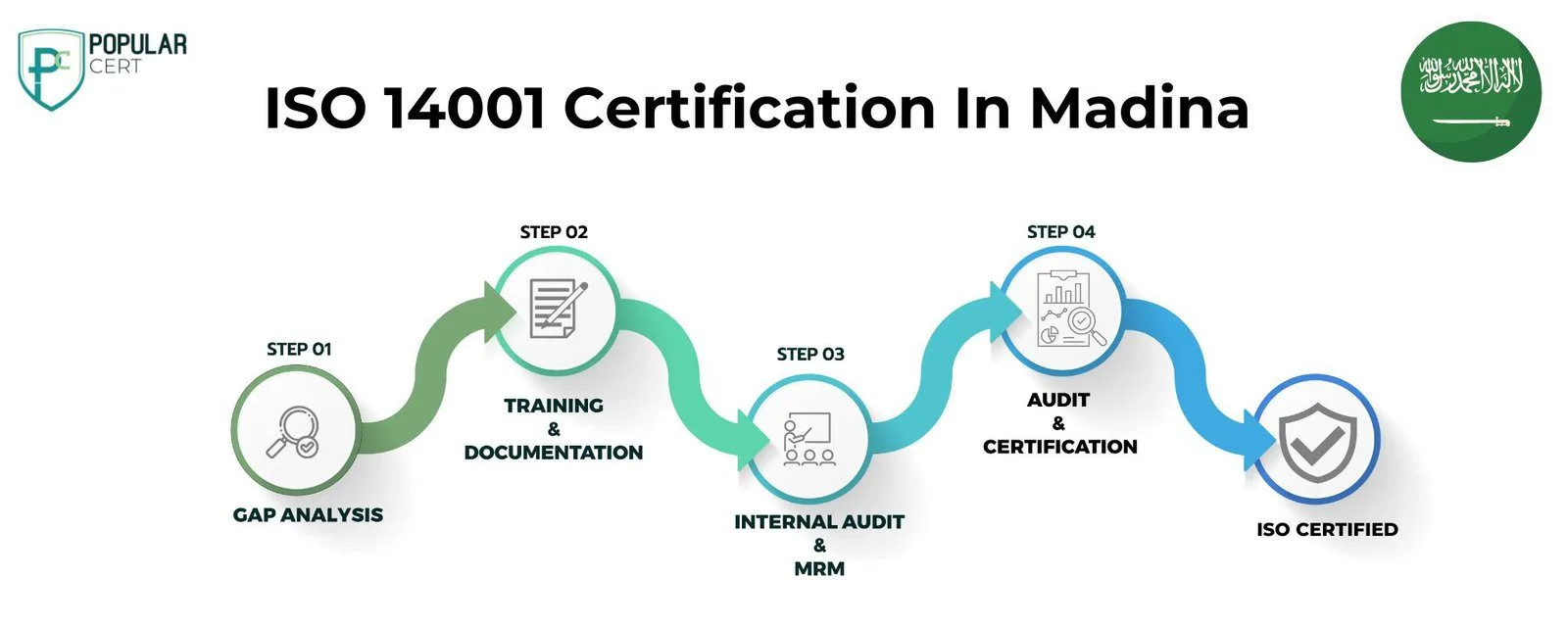
Process to Get ISO 14001 Certification in Madina
Consultation and Gap Analysis
PopularCert’s experts assess your organization’s specific environmental requirements and existing systems. We conduct a comprehensive gap analysis to identify areas requiring improvement to meet ISO 14001 environmental management standards.
Planning, Documentation, and Policy Development
After the gap analysis, we develop a tailored implementation plan, outline resource needs, and assist in creating essential environmental policies and documentation. These will be integrated smoothly into your organization's existing framework.
Training and Awareness
We provide thorough training to ensure your team understands the ISO 14001 requirements and their roles in maintaining the environmental management system.
Internal Audit and Management Review
Our team conducts internal audits to assess the effectiveness of your system and address any non-conformities. A management review ensures the system aligns with your organization’s goals and ISO 14001 standards.
External Certification Audit and Certification
Once the external audit is completed by the certification body, your organization will receive the ISO 14001 certificate. This certification demonstrates your commitment to environmental sustainability and continuous improvement while enhancing your credibility and customer trust.
Benefits of ISO 14001 certification in Madina
- Environmental Responsibility: Demonstrates commitment to reducing environmental impact and promoting sustainability.
- Regulatory Compliance: Ensures adherence to local and international environmental laws and regulations.
- Enhanced Reputation: Boosts your organization's public image and builds customer trust.
- Cost Efficiency: Reduces waste, conserves resources, and lowers operational costs.
- Risk Management: Helps identify and control environmental risks, minimizing liabilities.
- Competitive Advantage: Gives a market edge by showcasing environmental responsibility.
- Operational Efficiency: Encourages efficient use of resources and process improvements.
- Continuous Improvement: Promotes ongoing enhancements in environmental performance.
Types Of ISO Certification In Madina
Get Free Consultation
Our Clients


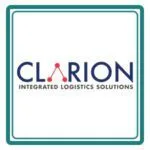


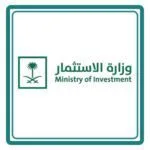
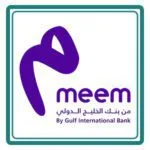

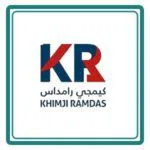


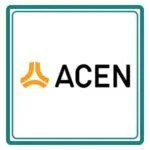
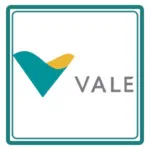



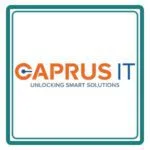

Key performance indicators (KPI) of environment management system:
- KPIs are the key aspects to be monitored that will help you to achieve your objectives.
- Measurements that you identify which show the performance of your system against your desired outcomes
- KPIs enable a company to make smart decisions about the direction of the company performance
- For example setting an audible alarm in the car for when you exceed the speed limit
- Number of people to be trained per month, zero non-compliance events or water samples are to be within X-Y level.
- Lead indicators: also known as process indicators for example number of people trained, procedures that have been developed, measures that have been implemented etc.
- Lag indicators: means result indicators, for example emissions released, waste volumes, legislative breaches etc. It is important to have a mix of both lead and lag indicators
Cost of ISO 14001 Certification in Madina
The cost of ISO 14001 Certification in Madina can vary depending on the size of your business, how complex your environmental management system is, and how prepared you are for certification. This certification helps businesses reduce their environmental impact, stay compliant with regulations, and improve their sustainability efforts. Although it requires an investment, the long-term rewards include lower operating costs, better environmental practices, and a stronger reputation. At PopularCert, we make the certification process easy, guiding you every step of the way to ensure you get the best value for your investment.
Achieve ISO 14001 certification in Madina with skilled consultants. Boost your environmental management and sustainability practices at a competitive cost. Contact us to learn how to get and apply for ISO 14001 certification for your business today.
Why choose PopularCert for ISO 14001 certification in Madina?
When it comes to ISO 14001 Certification in Madina, PopularCert is your trusted partner. Our experienced team helps you navigate the certification process with ease, ensuring your business meets environmental standards and operates sustainably. We provide personalized support, tailored to your needs, to help you reduce your environmental impact, stay compliant with regulations, and improve overall efficiency. With PopularCert, you’ll benefit from expert guidance and a smooth, straightforward path to achieving ISO 14001 certification, all while enhancing your business’s reputation and environmental performance.
Apply and get ISO 14001 Certification In Madina with skilled consultants. Boost your environmental management and sustainability practices at a competitive cost,with PopularCert.
GET A FREE CONSULTATION NOW
FAQ
What is ISO 14001 Certification?
ISO 14001 is an international standard for environmental management systems (EMS) that helps organizations improve their environmental performance and comply with regulations.
Why is ISO 14001 important for businesses in Madina?
ISO 14001 certification helps businesses reduce environmental impact, enhance sustainability, and comply with local and international environmental regulations, improving overall operational efficiency.
How can I get ISO 14001 certification in Madina?
To get ISO 14001 certified, partner with expert consultants like PopularCert for consultation, gap analysis, system implementation, training, internal audits, and support during the external certification audit.
How do I apply for ISO 14001 certification?
You can apply for ISO 14001 certification by contacting a certification body after preparing your EMS. PopularCert assists businesses through every stage of the certification process.
